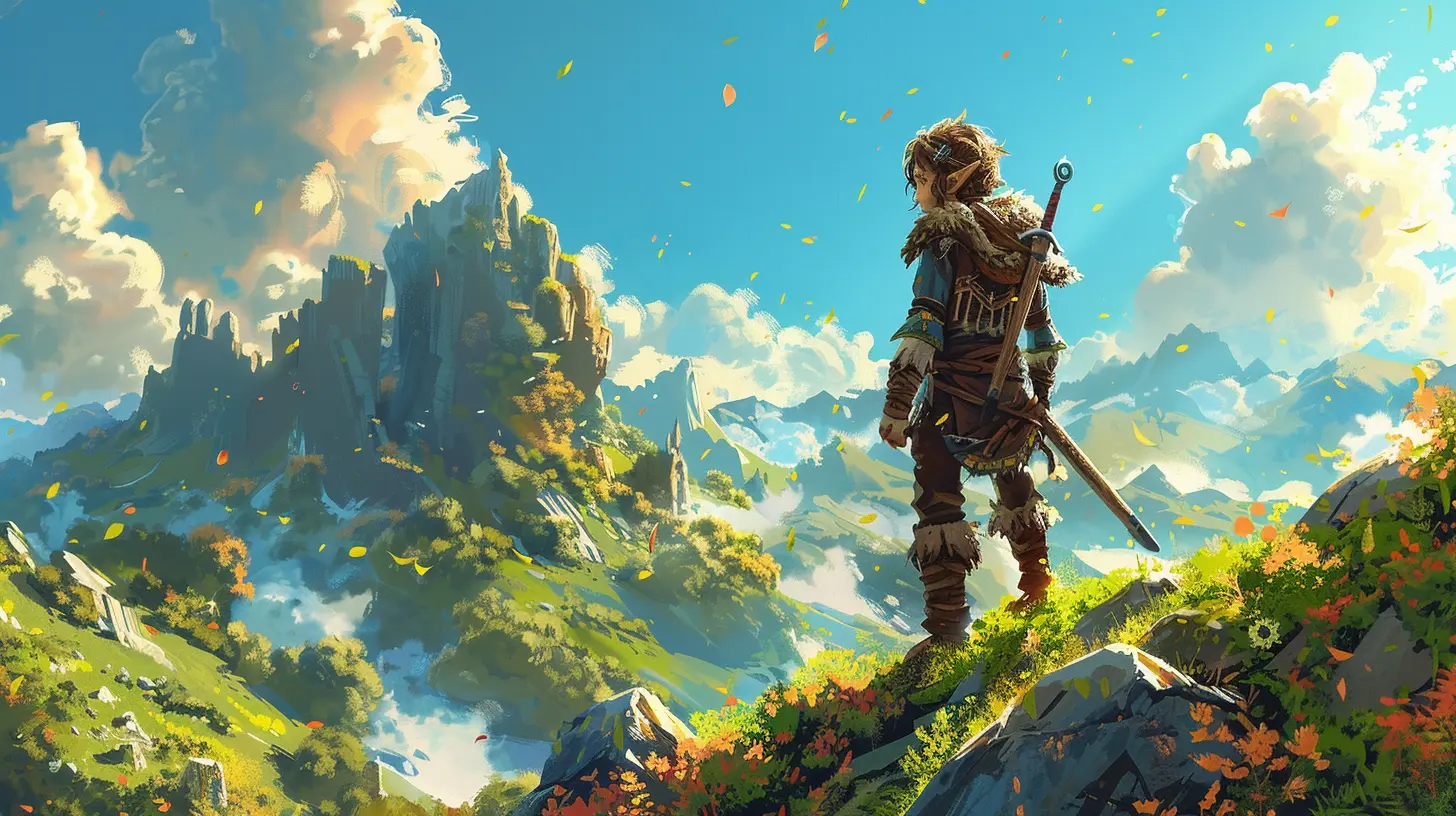27 January 2025
When it comes to casual gaming, the possibilities are nearly endless. Whether you're crushing candies, flinging birds into precarious pig-built towers, or managing a bustling café with pixelated customers, casual games have a unique way of captivating their players. But what is it that makes these games so addictive, so engaging? A big part of the magic lies in their creative game modes and mechanics.
In this article, let's dive into how casual game developers get creative with the modes and mechanics we’ve grown to love (and sometimes lose track of time playing). We'll also chat about why these elements matter so much and how they push the boundaries of what casual games can be.
The Beauty of Simplicity: What Makes a Game "Casual"?
To understand why creative modes and mechanics matter, let’s unpack the idea of casual games. These are the games you pick up when you’ve got a few minutes to kill—or... a few hours, depending on how "just one more level" goes. They don’t ask for a huge time commitment or complex controls. Instead, they thrive on simplicity and accessibility.Think about games like Tetris or Solitaire. They’re not packed with complicated storylines or advanced graphics. Instead, they focus on easy-to-learn, hard-to-master gameplay. That’s the heart of a casual game—it welcomes everyone, from hardcore gamers looking for a breather to someone who’s never touched a controller in their life.
Dynamic Game Modes: Keeping Things Fresh
1. Endless Mode: The Never-Ending Challenge
If you’ve ever played an endless runner like Temple Run or Subway Surfers, you know the thrill of trying to beat your own high score. Endless modes are a staple in casual games. They’re easy to jump into, but they ramp up in difficulty the longer you play.Why does this mode work so well? It taps into our innate competitiveness—not just against others but against ourselves. You might think, "Oh, I’ll just play for five minutes," and the next thing you know, you’re 40 minutes deep, chasing that elusive new record.
2. Time-Limited Challenges: Tick, Tock, You’re on the Clock
Who doesn’t love a good time crunch? Whether it’s a two-minute round of Bejeweled or a boss battle countdown timer, time-limited modes inject urgency into the gameplay. These mechanics leave no room for overthinking. You react instinctively, and the rush of adrenaline is its own kind of reward.Developers often sprinkle time-limited events throughout casual games to keep players coming back. Seasonal modes like "Winter Wonderland" or "Summer Festival" challenge players to complete tasks before the clock runs out, creating a sense of FOMO that’s surprisingly effective.
3. Puzzle Mechanics in Unexpected Places
Casual games have a knack for blending genres, and puzzles are often at the center of that mashup. Take Candy Crush Saga. On the surface, it's a simple match-3 game. But when you add obstacles like jelly blocks or limited moves, suddenly, you’re strategizing like it’s a military operation.Some casual games even weave puzzles into larger game worlds. For instance, the farming game Gardenscapes incorporates puzzles to unlock new areas, build relationships with characters, and upgrade tools. It’s like peeling back layers of an onion—there’s always something new to discover.
Player-Friendly Mechanics: Make It Fun, Not Frustrating
Let’s be real: nobody wants to play a game that feels like a chore. The best casual games are designed with the player’s enjoyment in mind. Here are a few mechanics that make these games so delightful.1. Pick-Up-and-Play Controls
Imagine handing your 70-year-old grandma a game controller. If she gets flustered by complicated button combos, she’s out. That’s why casual games prioritize simplicity. Whether it’s swiping, tapping, dragging, or tilting, the controls are intuitive enough for anyone to pick up and play.This ease of access doesn’t make the games less sophisticated. In fact, simplicity is the ultimate sophistication. It’s like the game is saying, “Hey, come as you are. We’ve got you.”
2. Reward Systems: Because Who Doesn’t Like Free Stuff?
Few things are as satisfying as being showered with rewards for your efforts. Coins, stars, badges, or even a hearty “Well Done!”—casual games know how to make you feel like a rockstar. What’s even better? These rewards often unlock more creative mechanics or content, keeping you hooked and wanting more.For example, many casual games use daily login bonuses to reward returning players. This tactic not only fosters loyalty but also creates a sense of progression, even if you’re only playing in short bursts.
3. Social Integration: Gaming with Friends (and Frenemies)
Competition doesn’t have to be cutthroat; sometimes, it’s just a friendly nudge to outscore your buddy. Casual games often integrate social features like leaderboards or cooperative modes. Think about when your Facebook feed was flooded with FarmVille requests, or when you raced to beat your sibling’s high score in Flappy Bird. There’s something about playing "with" others—even asynchronously—that makes the experience richer.
When Creativity Hits Overdrive: Fun and Quirky Mechanics
1. Physics-Based Gameplay
Physics-based games are a casual staple, and for good reason. They tap into our sense of curiosity and understanding of how the world works. Games like Angry Birds or Cut the Rope rely on real-world mechanics (well, mostly) to create engaging puzzles. Isn’t there something deeply satisfying about seeing your perfectly aimed bird topple a precariously stacked tower? It’s like digital Jenga on steroids.2. Unconventional Themes
Who said casual games need to be about candies or farms? Some of the most creative mechanics come wrapped in the strangest themes. Take Goat Simulator, for instance. You’re literally a goat, causing chaos in an open-world environment. Why? Because why not. It’s absurd, it’s hilarious, and it’s the kind of random fun that separates casual gaming from its more serious counterparts.3. Evolving Difficulty Levels
Casual games might start easy, but don’t be fooled—they can get tricky fast. Games like Fruit Ninja begin with slow-moving fruit, but before you know it, you’re dodging bombs while making split-second cuts. The gradual increase in difficulty ensures that players stay engaged without feeling overwhelmed.Why Creative Game Modes and Mechanics Matter
Now here’s the million-dollar question: why should we care about creativity in casual games? The answer lies in their staying power.Creative modes keep players coming back. They break the monotony and add layers of replayability. You might finish the main storyline, but an endless mode keeps you chasing high scores. You might solve all the puzzles, but time-limited events encourage you to return for exclusive rewards. In a space as saturated as casual gaming, creativity is what separates a forgettable game from one that becomes a cultural phenomenon.
The Future of Casual Gaming: What’s Next?
With the rise of new technologies like augmented reality (AR) and artificial intelligence (AI), the potential for innovative game modes and mechanics is off the charts. Imagine AR-based casual games where your living room becomes the playing field, or AI-driven characters that adapt to your unique playstyle. It’s an exciting time to be a gamer, and casual games are right at the forefront of this creative revolution.Final Thoughts
Getting creative with casual game modes and mechanics isn’t just a nice-to-have; it’s the secret sauce that makes these games so irresistible. From dynamic modes like endless challenges to quirky mechanics involving physics-based gameplay, the best casual games know how to keep us engaged without overcomplicating things. And honestly, in a world that’s already so complicated, isn’t it nice to have games that keep it simple and fun?So the next time you’re lost in an endless runner or solving puzzles to renovate a virtual mansion, take a moment to appreciate the creativity that went into making it all so enjoyable. Who knows what brilliant mechanics developers will dream up next? One thing’s for sure—casual gaming isn’t slowing down anytime soon.








Faryn McMaster
Great article! I love how you explored innovative ideas for casual game modes and mechanics. Your insights inspire creativity and encourage developers to think outside the box. Excited to see how these concepts can elevate player experiences! Keep it up!
February 14, 2025 at 5:23 PM